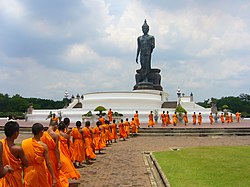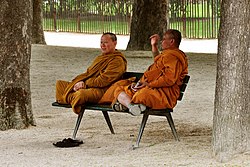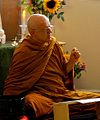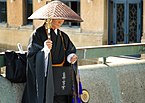Bhikkhu
| ||||||||||||||||||||||||||||||||||||||||||||||||||||||||||||||||||||||||||||||||||||||||||||||||||||||||||||||||||||||||||||||||||||||||||
Read other articles:

غنت-وفلجم 2018 تفاصيل السباقسلسلة80. غنت-وفلجممنافسةطواف العالم للدراجات 2018 1.UWTالتاريخ25 مارس 2018المسافات250٫8 كمالبلدان بلجيكا فرنسانقطة البدايةدينز [الإنجليزية]نقطة النهايةوفلجمالفرق25عدد المتسابقين في البداية175عدد المتسابقين في النهاية149متوسط السرعة42٫554 كم/سالمن�…

Pet Society Logo Pet Society.Publikasi 2007 Versi 1.0 GenreFantasi, Digital petKarakteristik teknisSistem operasiiOS PlatformFacebook dan iOS Modepermainan video multipemain dan Permainan video pemain tunggal Formatperamban web Metode inputpapan tombol komputer, tetikus dan layar sentuh Format kode Daftar 30 Informasi pengembangPengembangPlayfish, Electronic ArtsDesainerValentina Nohymar Lugo BalbásPenerbitApp Store Informasi tambahanSitus webpetsociety.com MobyGamespet-society Portal permainan…

BerméricourtcomuneBerméricourt – Veduta LocalizzazioneStato Francia RegioneGrand Est Dipartimento Marna ArrondissementReims CantoneBourgogne TerritorioCoordinate49°21′N 3°59′E / 49.35°N 3.983333°E49.35; 3.983333 (Berméricourt)Coordinate: 49°21′N 3°59′E / 49.35°N 3.983333°E49.35; 3.983333 (Berméricourt) Superficie8,21 km² Abitanti148[1] (2009) Densità18,03 ab./km² Altre informazioniCod. postale51220 Fuso orarioUTC…

هنودمعلومات عامةنسبة التسمية الهند التعداد الكليالتعداد قرابة 1.21 مليار[1][2]تعداد الهند عام 2011ق. 1.32 مليار[3]تقديرات عام 2017ق. 30.8 مليون[4]مناطق الوجود المميزةبلد الأصل الهند البلد الهند الهند نيبال 4,000,000[5] الولايات المتحدة 3,982,398[6] الإمارا�…

銮披汶·頌堪แปลก พิบูลสงคราม第3任泰國總理任期1938年12月16日—1944年8月1日君主國王拉玛八世前任披耶帕凤侯爵继任寬·阿派旺第8任泰國總理任期1948年4月8日—1957年9月16日君主國王拉玛九世前任寬·阿派旺继任乃朴·沙拉信 个人资料出生貝·基達桑卡(1897-07-14)1897年7月14日 暹罗暖武里府逝世1964年6月11日(1964歲—06—11)(66歲) 日本神奈川縣相模原市国籍 …
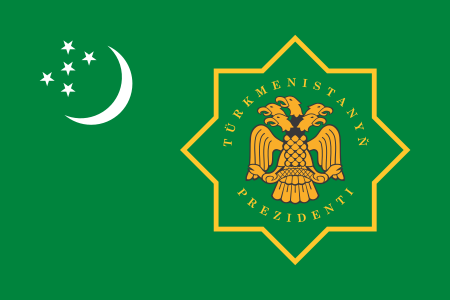
土库曼斯坦总统土库曼斯坦国徽土库曼斯坦总统旗現任谢尔达尔·别尔德穆哈梅多夫自2022年3月19日官邸阿什哈巴德总统府(Oguzkhan Presidential Palace)機關所在地阿什哈巴德任命者直接选举任期7年,可连选连任首任萨帕尔穆拉特·尼亚佐夫设立1991年10月27日 土库曼斯坦土库曼斯坦政府与政治 国家政府 土库曼斯坦宪法 国旗 国徽 国歌 立法機關(英语:National Council of Turkmenistan) 土�…

For the film known as The Devil and the Nun, see Mother Joan of the Angels. 1973 Italian filmThe Nun and The DevilDirected byDomenico Paolella (as Paolo Dominici)Written byTonino CerviDomenico PaolellaProduced byTonino CerviStarringAnne HeywoodLuc MerendaOrnella MutiMartine BrochardCinematographyGiuseppe RuzzoliniEdited byNino BaragliMusic byPiero PiccioniRelease date January 25, 1973 (1973-01-25) Running time91 minutesCountryItalyLanguageItalian The Nun and the Devil (Italian: Le…
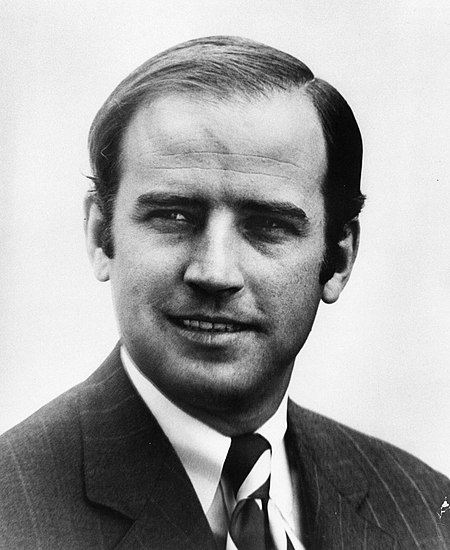
The 93rd United States Congress began on January 3, 1973. There were 11 new senators (six Democrats, five Republicans) and 68 new representatives (26 Democrats, 42 Republicans), as well as three new delegates (all Democrats), at the start of the first session. Additionally, seven senators (four Democrats, three Republicans) and 10 representatives (seven Democrats, three Republicans) took office on various dates in order to fill vacancies during the 93rd Congress before it ended on January 3, 197…
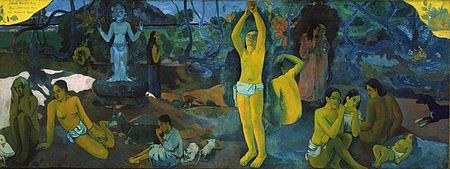
Частина серії проФілософіяLeft to right: Plato, Kant, Nietzsche, Buddha, Confucius, AverroesПлатонКантНіцшеБуддаКонфуційАверроес Філософи Епістемологи Естетики Етики Логіки Метафізики Соціально-політичні філософи Традиції Аналітична Арістотелівська Африканська Близькосхідна іранська Буддійсь…

Национальное аэрокосмическое агентство Азербайджана Штаб-квартира Баку, ул. С. Ахундова, AZ 1115 Локация Азербайджан Тип организации Космическое агентство Руководители Директор: Натиг Джавадов Первый заместитель генерального директора Тофик Сулейманов Основание Основ…

中國共產黨與世界政黨高層對話會CPC in Dialogue with World Political Parties High-Level Meeting日期2017年起地点 中国北京市網站中國共產黨與世界政黨高層對話會官网 中國共產黨與世界政黨高層對話會(英語:CPC in Dialogue with World Political Parties High-level Meeting)是由中共中央對外聯絡部主辦的國際性政黨間交流會,前身為2014至2017年举办的中國共產黨與世界對話會。[1] 对话会列表 …

نهر تاريم خريطة توضح أنهار حوض تاريم خريطة من الاٌقمار الصناعية لحوض تاريم المنطقة البلد آسيا ، الصين ، تركستان الصينية ، شينجيانغ الخصائص الطول 1,321 كـم (821 ميل)[1] المجرى المنبع الرئيسي جبال كونلون وقراقرم » الإحداثيات 39°28′N 88°19′E / 39.467°N 88.317°E / 39.467; 88…

Sitzverteilung im Vorarlberger Landtag zu Beginn der Legislaturperiode 2019 4 7 3 17 5 4 7 3 17 5 Insgesamt 36 Sitze SPÖ: 4 GRÜNE: 7 NEOS: 3 ÖVP: 17 FPÖ: 5 Sitzverteilung im Vorarlberger Landtag(Stand: Dezember 2021) 3 7 3 17 5 1 3 7 3 17 5 1 Insgesamt 36 Sitze SPÖ: 3 GRÜNE: 7 NEOS: 3 ÖVP: 17 FPÖ: 5 Fraktionslos: 1 Diese Liste der Abgeordneten z…

Portland Timbers 2023 soccer seasonPortland Timbers2023 seasonCEOHeather DavisInterim Head coachMiles JosephStadiumProvidence ParkPortland, Oregon(Capacity: 25,218)Major League SoccerConference: 10thOverall: 18thMLS Cup PlayoffsDNQHighest home attendance25,218[1]Lowest home attendance21,320[1]Average home league attendance23,102[2]Biggest win4–1 SEA (April 15)Biggest defeat5-0 HOU (August 20) Primary colors Secondary colors ← 20222024 →All statisti…

Former European Parliament constituency Northern IrelandEuropean Parliament constituencyLocation among the 2014 constituenciesMember stateUnited KingdomCreated1979Dissolved31 January 2020MEPs3Sources[2][3] Northern Ireland (Irish: Tuaisceart Éireann [ˈt̪ˠuəʃcəɾˠt̪ˠ ˈeːɾʲən̪ˠ] ⓘ;[1] Ulster-Scots: Norlin Airlann) was a constituency of the European Parliament from 1979 until the UK exit from the European Union on 31 January 2020. It elected three MEPs using the s…

British Conservative politician The Right HonourableLord StanleyMC MPSecretary of State for Dominion AffairsIn office16 May 1938 – 16 October 1938MonarchGeorge VIPrime MinisterNeville ChamberlainPreceded byMalcolm MacDonaldSucceeded byMalcolm MacDonaldMember of Parliamentfor FyldeIn office15 November 1922 – 16 October 1938Preceded byWilfrid AshleySucceeded byClaude LancasterMember of Parliamentfor Liverpool AbercrombyIn office28 June 1917 – 25 November 1918Pr…

San Diego State UniversityGeorgiaTypeSatellite campus of SDSUEstablished2014DeanHalil Güven[1]LocationTbilisi, Georgia41°42′17″N 44°47′24″E / 41.70472°N 44.79000°E / 41.70472; 44.79000CampusUrbanAffiliationsCalifornia State University system, San Diego State UniversityWebsitegeorgia.sdsu.edu The San Diego State University (SDSU) Georgia, known as SDSU Georgia, is a representation of San Diego State University (SDSU) in Tbilisi, Georgia offering intern…
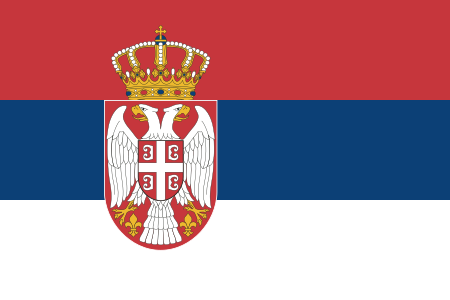
This article does not cite any sources. Please help improve this article by adding citations to reliable sources. Unsourced material may be challenged and removed.Find sources: List of futsal clubs in Serbia – news · newspapers · books · scholar · JSTOR (June 2015) (Learn how and when to remove this message) Prva futsal liga Srbije/First Futsal League of Serbia Clubs The first futsal league of Serbia currently has 12 clubs: No. Club Name City 1. Ekonomac …
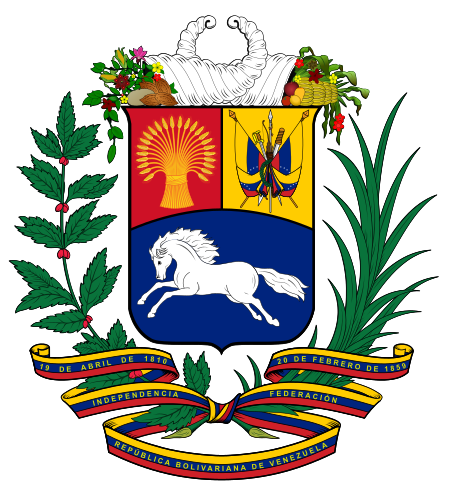
Leopoldo López López en julio de 2012. Comisionado presidencial para el Centro de Gobierno de Venezuela 28 de agosto de 2019-5 de enero de 2023Presidente Juan Guaidó Responsable Nacional de Voluntad Popular 5 de diciembre de 2009-18 de febrero de 2014Predecesor Creación del partidoSucesor Freddy Guevara[1] 2.º alcalde del Municipio Chacao 30 de julio de 2000-9 de diciembre de 2008Predecesor Cornelio Popesco(Interino, precedido por Irene Sáez)Sucesor Emilio Graterón Información per…

2020 South Dakota Democratic presidential primary ← 2016 June 2, 2020 2024 → ← RIGU →21 delegates (16 pledged, 5 unpledged)to the Democratic National ConventionThe number of pledged delegates won is determined by the popular vote Candidate Joe Biden Bernie Sanders(withdrawn) Home state Delaware Vermont Delegate count 13 3 Popular vote 40,800 11,861 Percentage 77.5% 22.5% Election results by county Joe Biden Elections i…
